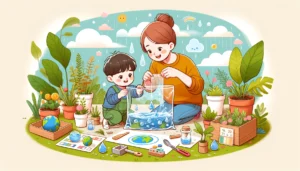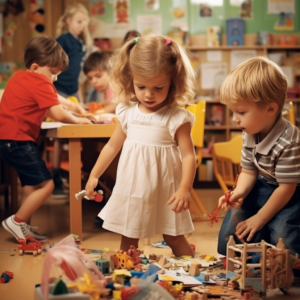Creative Ways to Teach Your Child About Nature and the Environment
Teaching children about nature and the environment is crucial for fostering a sense of responsibility and appreciation for the world around them. This article explores creative and engaging methods to introduce children to the wonders of nature and environmental stewardship.
In today’s digital age, it’s more important than ever to encourage children to connect with the natural world. Not only does this help them develop a sense of responsibility towards the environment, but it also fosters creativity, curiosity, and a love for the outdoors. This article will delve into various innovative ways to teach your child about nature and the environment, making learning both fun and impactful.
1. Nature Walks and Hikes
Exploring the Outdoors
Taking your child on nature walks and hikes is one of the simplest yet most effective ways to introduce them to the environment. These excursions provide hands-on learning opportunities where children can observe plants, animals, and ecosystems firsthand.
Educational Activities
To make these walks more educational, consider creating a nature scavenger hunt. Provide your child with a list of items to find, such as specific leaves, rocks, insects, or flowers. This activity encourages observation and identification skills.
2. Gardening Together
Planting Seeds of Knowledge
Gardening is a fantastic way to teach children about the environment. It offers lessons in biology, responsibility, and the lifecycle of plants. Start with easy-to-grow plants like sunflowers or tomatoes to keep your child engaged and motivated.
Environmental Impact
Explain the importance of plants in the ecosystem, such as how they produce oxygen and provide food and shelter for animals. This can lead to discussions about biodiversity and the importance of preserving natural habitats.
3. Wildlife Watching
Birdwatching and Bug Hunting
Encourage your child to observe wildlife in your backyard or a local park. Birdwatching and bug hunting are activities that can spark a child’s interest in animals and their behaviors.
Creating Habitats
Involve your child in creating a bird feeder or a bug hotel. This not only attracts wildlife to your garden but also teaches children about the needs and habits of different creatures.
4. Environmental Art Projects
Nature-Inspired Crafts
Art projects using natural materials can be both fun and educational. Collect leaves, pine cones, rocks, and sticks to create nature collages, sculptures, or even paint with natural pigments.
Recycling and Reusing
Teach your child the value of recycling by incorporating reusable materials into their art projects. This can lead to discussions about waste, recycling, and the importance of reducing our environmental footprint.
5. Science Experiments
Hands-On Learning
Conduct simple science experiments at home to demonstrate environmental concepts. For example, create a mini water cycle using a plastic bag and some water or simulate soil erosion with a small garden plot.
Understanding Ecosystems
These experiments help children understand complex concepts like the water cycle, soil composition, and the impact of human activities on the environment.
6. Storytelling and Reading
Environmental Books
Reading books about nature and the environment can instill a love for these topics. Choose age-appropriate books that tell stories about wildlife, conservation, and the beauty of the natural world.
Creating Stories
Encourage your child to create their own stories or drawings about nature. This not only fosters creativity but also reinforces what they have learned about the environment.
7. Visiting Nature Reserves and Museums
Educational Trips
Plan visits to nature reserves, botanical gardens, and natural history museums. These trips provide immersive learning experiences and can spark a lifelong interest in the environment.
Interactive Exhibits
Look for places with interactive exhibits where children can touch, see, and learn about different aspects of nature and conservation efforts.
8. Community Involvement
Participating in Clean-Up Events
Get involved in community clean-up events and encourage your child to participate. This teaches them about the impact of littering and the importance of community efforts in environmental conservation.
Joining Environmental Groups
Consider joining local environmental groups or clubs that focus on conservation projects. This provides ongoing opportunities for your child to learn and contribute to environmental efforts.
Teaching children about nature and the environment doesn’t have to be a chore. By incorporating fun, hands-on activities and fostering a sense of curiosity, you can instill a lifelong appreciation and responsibility for the natural world in your child. These creative methods not only educate but also build a deep, personal connection to the environment, ensuring that future generations will continue to care for our planet.
Start exploring these creative methods with your child today and watch their love for nature grow. Whether it’s a simple nature walk or a complex science experiment, every step counts towards raising an environmentally conscious individual.














